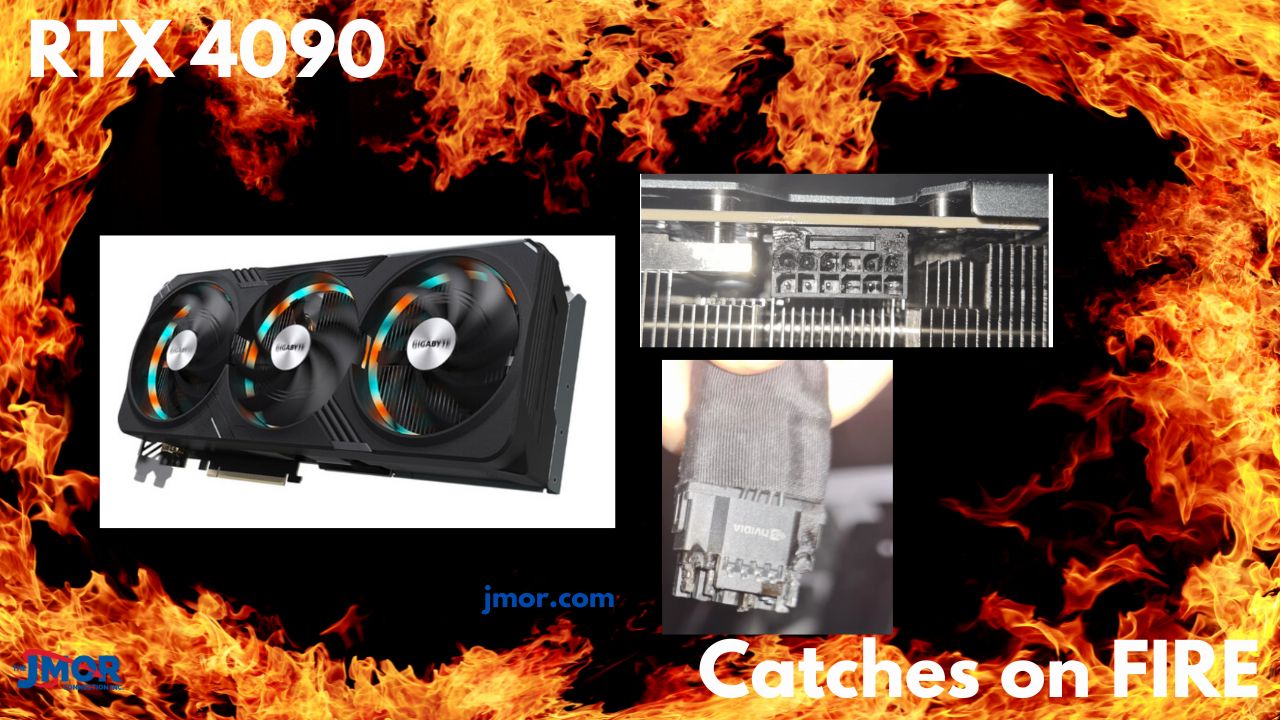GPU, a graphics processing unit, is a uniquely designed processor engineered to increase graphic rendering speed. Since this device can quickly process data simultaneously, it is ideal for machine learning, video editing, and gaming applications. Many computers have their GPU integrated on the motherboard, while others are mounted on a specific piece of hardware called a graphics card. The second part vital to a great graphics card is the VRAM (Video Ram), where video data is temporarily parked until the GPU can service them and output them to the screen. Each year, graphic cards are becoming more advanced, offering faster processing and thus requiring more power than before. NVIDIA has recently had several cases on the 4090, a higher-end video card that requires much energy. I will take a look and talk about the possible causes for why this 4090 graphics card is, in a word catching on fire as the Molex connector is melted.
Equally crucial on a graphics card is the heatsink or cooling dispensation system to allow the card to operate without it getting too hot that it will become damaged or have processing failures. Several types of cooling solutions range from passive and hybrid to active cooling. Passive cooling for graphic cards would consist of a heatsink to cool the GPU and VRAM, which is silent as it uses fanless cooling. Active cooling using a combination of a heat sink and fan is often referred to as HSF. Some graphics cards will have just one fan, while more robust cards could have two or three fans. Another type of cooling is water or Liquid cooling, which uses water, a radiator, and a fan. The hot water is circulated through the pipes and then cooled by the fan to lower the temperature of the GPU. Note that the VRAM and VRM (Voltage Regulator Module) are cooled passively by a heatsink. Water Cooling uses what is referred to as hybrid cooling, where there is water and also a heatsink. Lastly, graphics cards also support another type of cooling called Water Block Cooling. Water Block Cooling is when there is a chamber, and the water pump pushes water through a specially designed room to cool the card.
Video cards that use between 30-75 volts generally can plug into a PCIe slot and use the power from the place to operate correctly. Video PCIe cards that use 150 to 300 volts will often require an additional power connector as, without it, a drain may result, causing damage to the motherboard. GPU Cards that need additional power will use 6-pin or 8-pin connectors. A 6-pin connector connected to your power supply and the graphics card will deliver an extra 75 watts of power to the video card. An 8-pin connector connected from your power supply to the graphics card will provide 150 watts. Should your video card require more power than 150 watts, it will come with a 6-pin and 8-pin connector and can deliver 170 watts to the video card. Power-hungry video cards that need 375 watts will have onboard two 8-pin connectors.
Did you know there is even a 12-pint connector that will deliver 504 watts of power to a video card? Lastly, they have a 16-pin connector that can produce 600 watts for cards like the 4090. It has had several reports of reaching extreme temperatures that melt parts of this power cable’s Molex connector. What is happening, and why is this connector melting on many RTX4090 Graphics cards?
Many clients that purchased an RTX-4090 have experienced issues with the Molex Connector having pins on it melted. At first, many believed this was an electrical problem, but it wasn’t as if that was the case. The card would have made types of pop and crackling sounds. Later the issue was believed to be related to the fact that people were bending the cables and causing the solder point to separate on the inside and outside bend of the line, thus the one of each side, respectively. This seemed to make sense because the sensor wires were still connected and signaling to the card that it could send the higher voltage, but in reality, it was being sent and overheating. Then others noticed that the cable for the power was only rated for 150 Watts instead of 300 Watts, but this was not on all wires. Later it was believed but not confirmed that the issue was related to inconsistent sourcing of the power cables for 150 instead of 300. Even though this is still a problem, it is not happening that frequently and it appears to be all related to the wrong parts being used.
Thus, there are several isolated cases. I have some suggestions to prevent your card from catching fire and melting. The first thing to ensure is that the additional PCI-e power cables being used are 300 Watts and not 1500 Watts. Again, the only cable that should be 150 Watts is the four sensor cables which notify the card if additional power is available for it to run. Ensure that you do not bend the cable horizontally or vertically and that the Molex power connectors are firmly seated. Lastly, ensure you keep the connections intact and use either the two 8-pin connector cables separately or one line with two power supply connectors and one 16-pin Molex connector.






